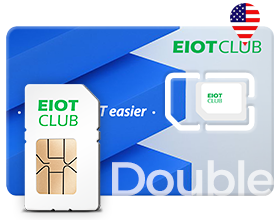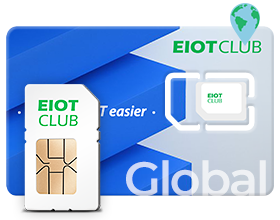eSIMとは何ですか?

eSIM(埋め込みSIM)は、携帯電話の接続性に対する考え方を大きく変えるものです。従来の SIM カードは物理的にデバイスに挿入されるのに対し、eSIM はデバイスのハードウェアに直接組み込まれているため、モバイル接続に対してより合理的で柔軟なアプローチを提供します。
eSIMと従来のSIMカードの違い
従来のSIMは、デバイスに物理的なスロットを必要とする小型の取り外し可能なカードです。これとは対照的に、 eSIM デバイスのマザーボードに組み込まれているため、物理的なカードスロットが不要になります。これにより、メーカーはよりスリムなデバイスを設計でき、より大きなバッテリーや防水性の向上などの追加機能のためのスペースを確保できます。
機能面では、eSIM テクノロジーにより、ユーザーは複数のネットワーク プロファイルを保存し、ソフトウェアを通じて簡単に切り替えることができるため、頻繁に旅行する人や複数の回線を管理する人にとって便利です。一方、従来の SIM カードでは、通信事業者を変更するときに手動で交換する必要があります。
セキュリティに関しては、eSIMが優れています。ハードウェアに直接埋め込まれたeSIMには、 堅牢な暗号化標準 従来の SIM カードに比べ、悪意のある人物が複製したり改ざんしたりすることが困難になります。リモート管理により、デバイスに物理的にアクセスすることなくプロファイルを簡単に更新したり非アクティブ化したりできるため、セキュリティがさらに強化されます。
eSIMの仕組み
eSIMの背後にある技術は、 リモート SIM プロビジョニング (RSP)は、ユーザーが携帯電話サービスを無線で有効化および管理できるようにするものです。SIM カードを物理的に挿入する代わりに、ユーザーは QR コードをスキャンするか、キャリアのアプリで有効化の手順に従って、SIM プロファイルをデバイスにダウンロードします。このプロファイルには、キャリアのネットワーク上でユーザーを認証するために必要な情報が保存されます。
通信事業者はeSIMプロファイルをリモートで管理します。この無線機能は、次のような業界で特に役立ちます。 IoT(モノのインターネット)遠隔地やアクセスが困難な場所にデバイスが配備される場合もあります。企業は技術者を現場に派遣することなく、新しいデバイスをプロビジョニングし、ネットワーク プロファイルを切り替えることができます。
eSIMの利点
eSIM には多くの利点があります:
- eSIM テクノロジーにより、デバイス、特に IoT デバイスはネットワーク オペレーターをスムーズに切り替えることができ、地域間で継続的な接続を維持できます。
- 物理的な SIM カードが不要なため、メーカーやプロバイダーは SIM の製造と配布にかかるコストと時間を削減できます。リモート プロビジョニングにより、セットアップとユーザーのオンボーディングがさらに迅速化されます。
- SIM スロットがないため、パフォーマンスや接続性を犠牲にすることなく、ウェアラブルなどのより小型でコンパクトなデバイスの開発が可能になります。
eSIMの設定と使用
eSIMの設定は一般的に簡単です。ほとんどの通信事業者がこの技術をサポートしており、 新しいプロフィールを設定する 通常、キャリアが提供する QR コードをスキャンするか、アクティベーション コードを入力します。eSIM プロファイルがインストールされると、ユーザーは物理カードを入れ替えることなく、デバイスの設定から異なるキャリア間を簡単に切り替えることができます。
キャリアやプランを切り替えるには、デバイス設定で別のプロファイルを選択するだけです。これは、頻繁に旅行し、SIMカードを物理的に変更する手間をかけずにローカルネットワークにアクセスする必要がある人にとって特に便利です。
eSIM テクノロジーでユーザーが直面する可能性のある一般的な問題には、互換性の問題が含まれます。 すべてのデバイスがeSIMをサポートしているわけではないそのため、ユーザーは従来の SIM カードから切り替える前に、自分の携帯電話、タブレット、またはウェアラブル デバイスがこのテクノロジと互換性があるかどうかを確認する必要があります。
旅行における世界的な使用と応用
海外旅行者にとって、eSIM は便利なソリューションです。従来の SIM カードでは、新しい国に到着したら現地の SIM を購入する必要がありました。eSIM では、旅行者が新しいネットワーク プロファイルをその場でダウンロードできるため、この手間が省けます。これにより、国際ローミングに関連するコストが削減されるだけでなく、物理的な SIM カードを探して購入する手間も省けます。
さらに、多くの eSIM プランには国際的なカバレッジが付属しており、ユーザーは国境を越えるときに SIM を切り替えることを心配せずに接続を維持できます。この機能は、頻繁に飛行機に乗る人やグローバル ビジネスにとって非常に貴重です。
安全
盗む物理的なSIMがないので、 eSIM 盗難や複製の被害を受けにくくなります。リモート管理機能により、デバイスが紛失または盗難にあった場合、ユーザーとネットワークプロバイダーはeSIMを即座に無効にすることができ、個人データを保護し、不正アクセスを防止できます。
こうした進歩にもかかわらず、ユーザーは依然として注意が必要です。他のワイヤレス テクノロジーと同様に、eSIM もハッキングの攻撃から逃れられるわけではありません。リスクを軽減するには、強力な暗号化、安全なネットワーク プロファイル、定期的なソフトウェア更新が推奨されるベスト プラクティスです。
よくある質問
どのデバイスでもeSIMを使用できますか?
すべてのデバイスがeSIMテクノロジーをサポートしているわけではありません。ほとんどの新しいスマートフォン、スマートウォッチ、タブレットにはeSIM機能が搭載されています。EIOTCLUB eSIMをサポートするデバイスについては、当社の ガイドお使いのデバイスがeSIMをサポートしていない場合は、物理SIM(eSIMアダプター) を代わりに使用してください。
eSIMは従来のSIMカードよりも高価ですか?
サービス面では大きなコストの違いはありませんが、ユーザーは複数の物理的な SIM カードを購入することなく、より安価なプランと国際オプションを柔軟に切り替えることができるというメリットを享受できます。
eSIMで通信事業者を切り替えるにはどうすればいいですか?
eSIM でキャリアを切り替えるのは簡単です。デバイスの設定にアクセスし、新しい携帯電話プランを追加するオプションを選択し、新しいキャリアから提供された QR コードをスキャンするだけです。プロセス全体がデジタルで行われるため、物理的なカードを取り出したり挿入したりする必要がありません。
eSIM を搭載した携帯電話を紛失または盗難された場合はどうなりますか?
携帯電話を紛失または盗難された場合、eSIM プロファイルをリモートで無効にすることができます。携帯電話会社に連絡してデバイスの eSIM を無効にし、アカウントを不正使用から保護してください。通常、これは物理的な SIM を無効にするよりも迅速です。
デバイスに複数の eSIM プロファイルを設定できますか?
はい、ほとんどの eSIM 対応デバイスでは、複数のネットワーク プロファイルを保存できますが、一度にアクティブにできるのは 1 つだけです。これは、頻繁に旅行するユーザーや、個人用とビジネス用の回線を別々に必要とするユーザーにとって特に便利です。
eSIMを使用すると信号強度やデータ速度は向上しますか?
eSIM の信号強度とデータ速度は、ネットワーク プロバイダーとお住まいの地域のカバレッジによって異なります。eSIM 自体はパフォーマンスには影響しませんが、特定の地域でより優れたカバレッジを提供するネットワークを選択する柔軟性が高まります。
eSIMテクノロジーは安全ですか?
はい、eSIM テクノロジーは、暗号化やリモート管理などの高度なセキュリティ機能を提供します。これにより、物理的に取り外したり複製したりできる従来の SIM カードと比較して、デバイスのセルラー接続を改ざんすることが難しくなります。
eSIM がアクティベートされない場合はどうすればいいですか?
eSIM がアクティブ化されない場合は、デバイスが eSIM に対応していること、および通信事業者が eSIM サービスをサポートしていることを再確認してください。問題が解決しない場合は、EIOTCLUB に問い合わせてトラブルシューティングを行うか、ネットワーク設定をリセットしてください。
海外旅行中にeSIMを使用できますか?
はい、eSIMは海外旅行者にとって特に便利です。EIOTCLUBなどの多くの通信事業者が提供しています。 グローバルにカバーするeSIMプラン物理的な SIM カードを購入することなく、訪問先の国のローカル プロファイルをダウンロードできます。
eSIMを使用するとバッテリーの消費量は増えますか?
いいえ、eSIM は従来の SIM カードよりも多くのバッテリーを消費しません。実際、物理的なカードとスロットが不要になることで、デバイスの効率がわずかに向上する可能性があります。ただし、ネットワークの強度やデバイスの使用状況などの他の要因がバッテリー寿命に大きな影響を与えます。





















 例えば
例えば
 リフィル
リフィル






